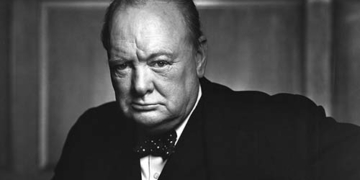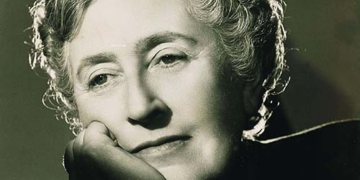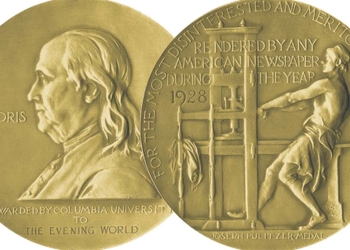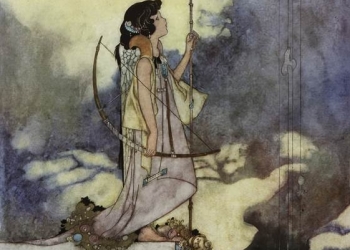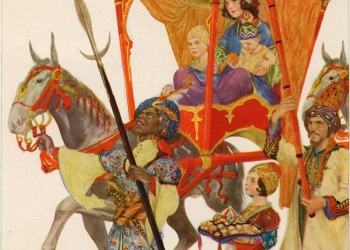Share via:

Terence Hanbury “Tim” White (1906 – 1964) was an English author best known for his Arthurian novels, published together in 1958 as The Once and Future King. One of his most memorable is the first of the series, The Sword in the Stone, published as a stand-alone book in 1938.
White’s novel Earth Stopped (1934) and its sequel Gone to Ground (1935) are science fiction novels about a disaster that devastates the world. Gone to Ground contains several fantasy stories told by the survivors that were later reprinted in The Maharajah and Other Stories.
White wrote to a friend that, in autumn 1937, “I got desperate among my books and picked [Malory] up in lack of anything else. Then I was thrilled and astonished to find that (a) The thing was a perfect tragedy, with a beginning, a middle and an end implicit in the beginning and (b) the characters were real people with recognizable reactions which could be forecast. … Anyway, I somehow started writing a book.”
The novel, which White described as “a preface to Malory”, was titled The Sword in the Stone and published in 1938, telling the story of the boyhood of King Arthur. White was also influenced by Freudian psychology and his own lifelong involvement in natural history. The Sword in the Stone was critically well-received and was a Book of the Month Club selection in 1939.
In February 1939, White moved to Doolistown in County Meath, Ireland, where he lived out the Second World War as a de facto conscientious objector. In Ireland, he wrote most of what became The Once and Future King: The Witch in the Wood (later cut and rewritten as The Queen of Air and Darkness) in 1939, and The Ill-Made Knight in 1940. The version of The Sword in the Stone included in The Once and Future King differs from the earlier version; it is darker, and some critics prefer the earlier version.
In 1958, T. H. White completed the fourth book of The Once and Future King, The Candle in the Wind, which was first published with the other three parts and has never been published separately. White lived to see his Arthurian work adapted as the Broadway musical Camelot (1960) and the animated film The Sword in the Stone (1963).
Fantasy writer Michael Moorcock enjoyed White’s The Once and Future King, and was especially influenced by the underpinnings of realism in his work. Moorcock eventually engaged in a “wonderful correspondence” with White, and later recalled that White gave him “some very good advice on how to write”.
J. K. Rowling has said that White’s writing strongly influenced the Harry Potter books; several critics have compared Rowling’s character Albus Dumbledore to White’s absent-minded Merlyn, and Rowling herself has described White’s Wart as “Harry’s spiritual ancestor.” Author Neil Gaiman was asked about the similarities between Harry Potter and Gaiman’s character Timothy Hunter, and he stated that he did not think Rowling had based her character on Hunter. “I said to [the reporter] that I thought we were both just stealing from T. H. White: very straightforward.”
T. H. White – First Edition Identification Guide
Note: This list only includes works published prior to 1977.
| Year | Title | Publisher | First edition/printing identification points |
|---|---|---|---|
| 1977 | THE BOOK OF MERLYN | Austin & London: University of Texas Press, [1977] | No statement of printing on © page. |
| 1932 | DARKNESS AT PEMBERLEY | London; Victor Gollancz Ltd, 1932 | No statement of printing on © page. |
| 1931 | DEAD MR. NIXON | London, Toronto, Melbourne and Sydney: Cassell and Company Ltd, [1931] | First published 1931 on © page. With R. MCNAIR SCOTT. |
| 1934 | EARTH STOPPED: OR MR MARX'S SPORTING TOUR | London: Collins, 1934 | No statement of printing on © page. |
| 1947 | THE ELEPHANT AND THE KANGAROO | New York: G. P. Putnam's Sons, [1947] | No statement of printing on © page. |
| 1933 | FAREWELL, VICTORIA | London; Collins, 1933 | Three bindings, sequence not established but probably as listed:
|
| 1932 | FIRST LESSON | London; Chatto & Windus, 1932 | No statement of printing on © page. James Aston, pseudonym. |
| 1935 | GONE TO GROUND | London; Collins, 1935 | Four bindings, sequence not established but probably as listed:
|
| 1940 | THE ILL-MADE KNIGHT | New York: G. P. Putnam's Sons, 1940 | No statement of printing on © page. Collected later with textual revisions in THE ONCE AND FUTURE KING. |
| 1957 | THE MASTER | London; Jonathan Cape, [1957] | Boards. First published 1957 on © page. |
| 1946 | MISTRESS MASHAM'S REPOSE | New York: G. P. Putnam's Sons, [1946] | No statement of printing on © page. Trade printing: Dark blue cloth, spine lettered in gold; cream endpapers printed in brick red; VAN REES PRESS on © page. Note: All book club printings have small dot stamped in lower right of rear cover. |
| 1958 | THE ONCE AND FUTURE KING | London; Collins, 1958 | No statement of printing on © page. Dust jacket occurs in two states, priority as listed:
|
| 1938 | THE SWORD IN THE STONE | London: Collins, 1938 | No statement of printing on © page. Collected later with expanded text in THE ONCE AND FUTURE KING. ALSO: New York: Time Reading Program Special Edition/Time Inc., [1964]. Wrappers. No statement of printing on © page. New "Introduction" by the author." |
| 1932 | THEY WINTER ABROAD | London: Chatto & Windus, 1932 | No statement of printing on copyright James Aston, pseudonym. |
| 1939 | THE WITCH IN THE WOOD | New York: G. P. Putnam's Sons, 1939 | No statement of printing on © page. Collected later with textual revisions as THE QUEEN OF AIR AND DARKNESS in THE ONCE AND FUTURE KING. |
T. H. White – First Printing Dust Jacket Identification Points
Gallery of First state Dust Jackets of T. H. White’s works. Only includes the first appearance in book form. Either the UK or US edition and does not include later printings.
Reference:
- Wikipedia
- L. W. Currey, Science Fiction and Fantasy Authors: A Bibliography of First Printings of Their Fiction and Selected Nonfiction.

